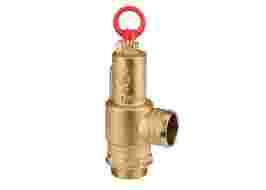What Do You Know About Vacuum Tank Relief Valves?

Relief valves aren't flashy. They're not the first thing anyone notices on a vacuum tank. But if you've ever seen a tank collapse—or balloon under too much pressure—you already know just how important these things are. Relief valves don't run daily, but when needed, they have to work. No delay, no excuses.
What a Relief Valve Is Actually For
The job is simple: keep pressure (or vacuum) from pushing your tank beyond what it was built to handle. When pressure spikes or the vacuum pulls too hard, the valve opens just enough to relieve it. Once things settle, it shuts. That's it. No electronics, no fancy tech. It's just a mechanical backup that steps in when things go sideways.
You might never hear it open—but if it doesn't open when it should, you'll know.
Style, Material, and Fit Matter
Most tanks use spring-loaded vacuum/pressure combo valves. They're compact, reliable, and easy to service. As for materials, you'll find aluminum, stainless, and brass relief valve designs depending on your application. Brass is common because it handles moisture and wear without costing a fortune.
What actually matters is the rating. A relief valve is useless if it's not sized right for the tank it's on. Too high, and it won't open when it should. Too low, and you're constantly losing pressure you need.
Maintenance That Actually Prevents Problems
People skip checking relief valves all the time—until something fails. The truth is, they don't need much. But they do need attention.
Pull them off. Make sure they're clean. Check that the spring still has tension and that there's no corrosion or gunk in the housing. If the valve is sticking or leaking, it's time for a new one. This isn't the place to experiment with "good enough."
Also: no mix-and-match parts. If you're replacing a relief valve, get the right threads, the right rating, the right material. It's a critical safety component; treat it like one.
Final Thought
Relief valves don't get a lot of credit—but they protect your tank, your pump, and your crew. One failure can take your whole system offline. Check them regularly. Replace them when they're worn. And don't assume they'll work just because they always have.
- Whats New
- Shopping
- Wellness
- Sports
- Theater
- Religion
- Party
- Networking
- Music
- Literature
- Art
- Health
- Giochi
- Food
- Drinks
- Fitness
- Gardening
- Dance
- Causes
- Film
- Crafts
- Other/General
- Cricket
- Grooming
- Technology

